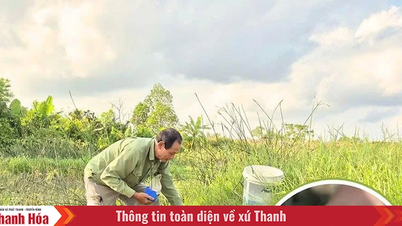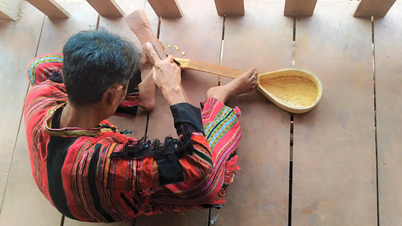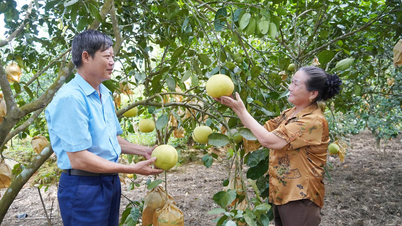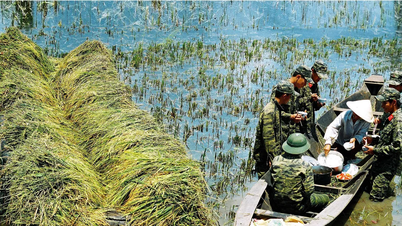A reader commented, wondering: “Dạt vào” or “giật vào”? The writer answered “Lương phẩm” (meaning writing “giật vào” or “dật vào” is both correct).
However, many other readers do not accept.
So, “drift in” or “drift in”, which spelling is correct? Or are both correct?
Let's look in the dictionary to see how "drift" and "drift" are used.
- Dai Nam Quoc Am Dictionary (Huynh Tinh Paulus Cua) explains "drift" as "to be carried out by the wind and waves, or to be brought in", and lists "drift to shore" = "to be brought to shore"; "drift out" = "to be brought out, to be removed, to be set aside"; "bat giất" = "to drift, or to be brought somewhere"...
With the word “dạt”, this dictionary explains it as “to spread out, to loosen, not to gather together” and lists: “dạt ra” = “to put away, loosen up”; “dạt kèo” = “to pull the firewood apart to keep it far apart; to reduce the firewood, reduce the fire”.
Thus, according to Huynh Tinh Paulus Cua's explanation, when describing drifting, it must be written as "drifting"; and when talking about "putting out, leaving out, setting apart" or "spreading out, to loosen, not allowing to gather together", it is okay to write "drifting" or "drifting". Accordingly, writing "The leaves began to drift into the yard..." is completely correct.
Some later published dictionaries:
- Vietnamese dictionary (Khai Tri Tien Duc Association) explains “drift” as: “Tossed by wind and waves”, and gives the example “The rain washed away the whole pond of duckweed. The boat was washed ashore by the waves. Literature: Flowers drifted, duckweed drifted (Kieu)”. With the word “drift”, this dictionary explains it as “sparse, spread”, and gives the example “Fabric drifted, thread drifted”.
- Vietnamese dictionary (Le Van Duc) explains “drift” as “Drift, lost, drifting, aimless”, and gives the example “Drift boat, drifting duckweed, drifting flowers”. With “dất” (verb), this dictionary explains as “Load out, spread apart, not to pile up”, and gives the example “Dất wood, drifting pile of sand”; and “dất” (adjective) means “Sparse, loose, not thick, not tight: drifting fabric, drifting thread”.
Some other dictionaries such as the General Vietnamese Dictionary (Dao Van Tap), New Vietnamese Dictionary (Thanh Nghi), have similar explanations.
Thus, the dictionary of the Association for Enlightenment of Tien Duc and Tran Van Duc, along with several other authors, clearly distinguishes: “drift” is used for drifting, being pushed away indefinitely; and “drift” is associated with the case of making something loose, separate, or become loose, far apart, no longer tight or tight. Accordingly, writing “The leaves began to drift into the yard…” is not a spelling mistake.
Some dictionaries published even later:
- Vietnamese dictionary (edited by Van Tan) only records “drift” and explains it as “Being pushed to one side <> Drifting cloth; Drifting duckweed”.
- Vietnamese dictionary (Hoang Phe editor, Vietlex version), "drift" entry, instructions for reading "drift". The entry "drift" explains two meanings: - "being pushed to one side, somewhere", and gives the example "drifting duckweed ~ "The children ran to both sides, splashing water." (Doan Gioi)"; - "spread out [usually about textile fibers]", for example "the fabric surface has drifted".
- The Great Vietnamese Dictionary (edited by Nguyen Nhu Y) only collects “dạt”, not “giạt”, and explains “dạt” (verb) as “Being pushed to one side, one place: The raft drifted to the shore <> duckweed drifted, clouds drifted”; explains “dạt” (adjective) as “Dành ra: a shirt worn for a long time, the fabric drifted away”.
Thus, in Vietnamese, there is a distinction between “giạt” (drifting) and “dạt” (being drifted away, thinned out). Later on (especially now), people tend to simplify, no longer distinguishing “giạt” from “dạt”, but returning to a common way of writing “dạt”. However, the subtlety in writing the distinction between “giạt” in “Bèo giạt Mây trôi”, “Tiết thay cái nước xanh/ để cho bèo tam, bèo ong giat trong” (Folklore), with “dạt” in “vải bị drifted”, is still the choice of many people. And so, considering the change of words, writing “trôi giất” or “trôi dạt” is both correct.
Man Nong (Contributor)
Source: https://baothanhhoa.vn/giat-va-dat-255246.htm





![[Photo] General Secretary To Lam receives the Director of the Academy of Public Administration and National Economy under the President of the Russian Federation](/_next/image?url=https%3A%2F%2Fvphoto.vietnam.vn%2Fthumb%2F1200x675%2Fvietnam%2Fresource%2FIMAGE%2F2025%2F12%2F08%2F1765200203892_a1-bnd-0933-4198-jpg.webp&w=3840&q=75)
















































































































Comment (0)